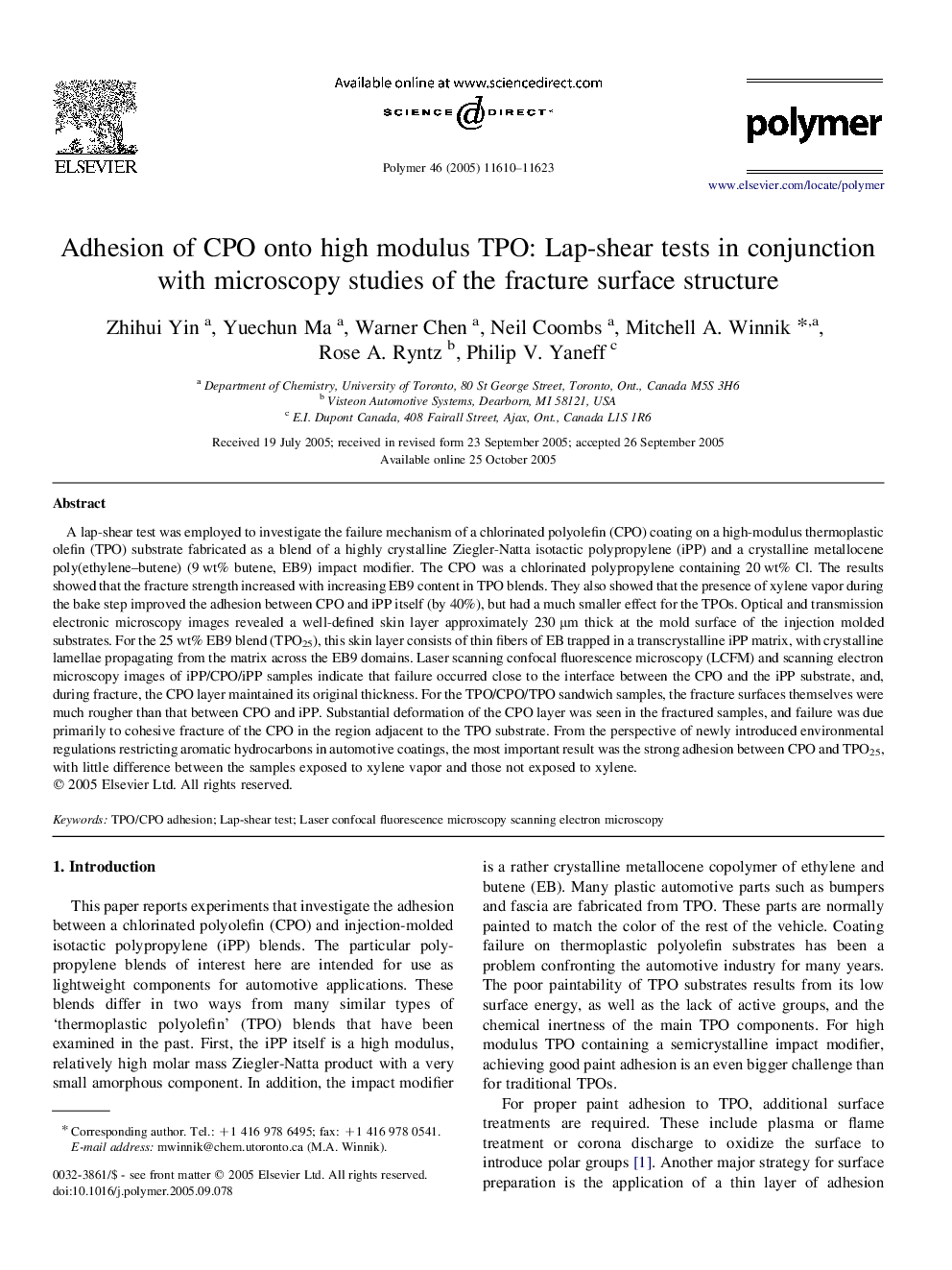| کد مقاله | کد نشریه | سال انتشار | مقاله انگلیسی | نسخه تمام متن |
|---|---|---|---|---|
| 5187524 | 1381131 | 2005 | 14 صفحه PDF | دانلود رایگان |

A lap-shear test was employed to investigate the failure mechanism of a chlorinated polyolefin (CPO) coating on a high-modulus thermoplastic olefin (TPO) substrate fabricated as a blend of a highly crystalline Ziegler-Natta isotactic polypropylene (iPP) and a crystalline metallocene poly(ethylene-butene) (9 wt% butene, EB9) impact modifier. The CPO was a chlorinated polypropylene containing 20 wt% Cl. The results showed that the fracture strength increased with increasing EB9 content in TPO blends. They also showed that the presence of xylene vapor during the bake step improved the adhesion between CPO and iPP itself (by 40%), but had a much smaller effect for the TPOs. Optical and transmission electronic microscopy images revealed a well-defined skin layer approximately 230 μm thick at the mold surface of the injection molded substrates. For the 25 wt% EB9 blend (TPO25), this skin layer consists of thin fibers of EB trapped in a transcrystalline iPP matrix, with crystalline lamellae propagating from the matrix across the EB9 domains. Laser scanning confocal fluorescence microscopy (LCFM) and scanning electron microscopy images of iPP/CPO/iPP samples indicate that failure occurred close to the interface between the CPO and the iPP substrate, and, during fracture, the CPO layer maintained its original thickness. For the TPO/CPO/TPO sandwich samples, the fracture surfaces themselves were much rougher than that between CPO and iPP. Substantial deformation of the CPO layer was seen in the fractured samples, and failure was due primarily to cohesive fracture of the CPO in the region adjacent to the TPO substrate. From the perspective of newly introduced environmental regulations restricting aromatic hydrocarbons in automotive coatings, the most important result was the strong adhesion between CPO and TPO25, with little difference between the samples exposed to xylene vapor and those not exposed to xylene.
Journal: Polymer - Volume 46, Issue 25, 28 November 2005, Pages 11610-11623